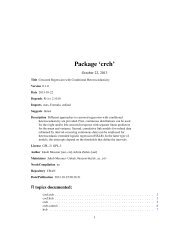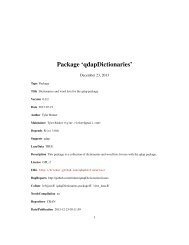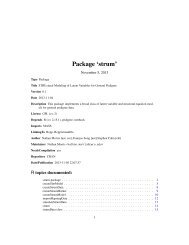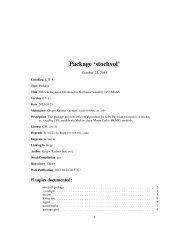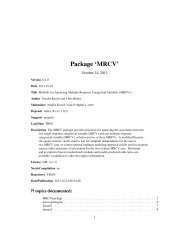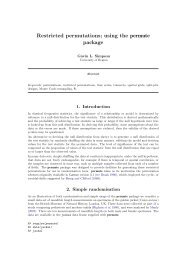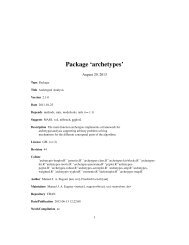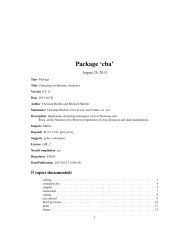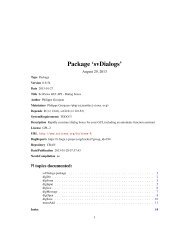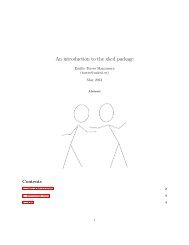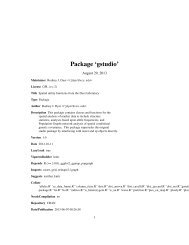Package 'samr'
Package 'samr'
Package 'samr'
You also want an ePaper? Increase the reach of your titles
YUMPU automatically turns print PDFs into web optimized ePapers that Google loves.
10 samr<br />
censoring.status.star.keep<br />
n by nperms.act matrix of censoring.status indicators from each permutation<br />
resp.type The response type used. Same as resp.type.arg, except for time course data,<br />
where time data is summarized and then treated as non-time course. Eg if<br />
resp.type.arg="oneclass.timecourse" then resp.type="oneclass"<br />
resp.type.arg The response type requested in the call to samr<br />
stand.contrasts<br />
For multiclass data, p by nclass matrix of standardized differences between the<br />
class mean and the overall mean<br />
stand.contrasts.star<br />
For multiclass data, p by nclass by nperms.act array of standardized contrasts<br />
for permuted datasets<br />
stand.contrasts.95<br />
For multiclass data, 2.5 of standardized contrasts. Useful for determining which<br />
class contrast for significant genes, are large<br />
depth For array.type="seq", estimated sequencing depth for each sample.<br />
call calling sequence<br />
Author(s)<br />
Jun Li and Balasubrimanian Narasimhan and Robert Tibshirani<br />
References<br />
Tusher, V., Tibshirani, R. and Chu, G. (2001): Significance analysis of microarrays applied to the<br />
ionizing radiation response PNAS 2001 98: 5116-5121, (Apr 24). http://www-stat.stanford.edu/~tibs/SAM<br />
Li, Jun and Tibshirani, R. (2011). Finding consistent patterns: a nonparametric approach for identifying<br />
differential expression in RNA-Seq data. To appear, Statistical Methods in Medical Research.<br />
Examples<br />
######### two class unpaired comparison<br />
# y must take values 1,2<br />
set.seed(100)<br />
x



